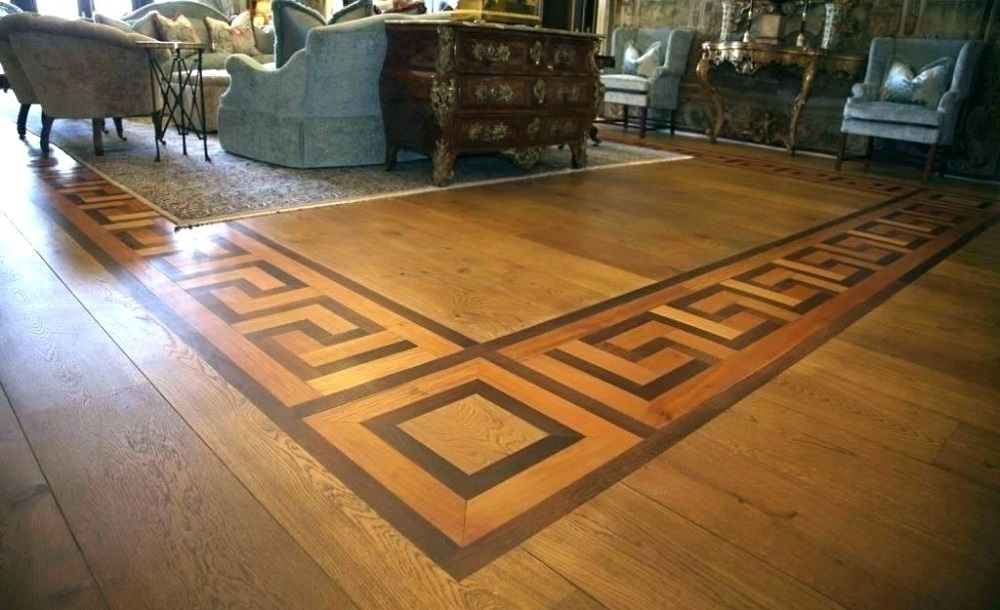The popularity of Wood Floors
A recent trend in home improvement involves installing hardwood flooring in place of carpet, tile or other materials. Many homeowners are seeking a way to add a sense of beauty, warmth, and style to their homes, while at the same time investing in an option that will potentially increase the resale value. Solid hardwood flooring had long been the flooring of choice for this purpose, but recently, many homeowners are turning to another option – engineered hardwood flooring.
Traditional wood flooring consists of a solid piece of lumber. The manufacturer cuts the plank to the desired size and then finishes it with a tongue and groove pattern that allows the pieces to fit together. For many years, it was the only available option for those wishing to install a wood floor in the home.
Solid Wood Flooring Disadvantages
Although extremely popular and durable, solid wood does have some decided disadvantages when compared to engineered wood. Wood contracts and expands due to seasonal changes in temperature and humidity. For this reason, traditional wood is a poor choice for areas of the home that have high or variable levels of moisture, such as bathrooms or laundry rooms.
Engineered flooring is much more resistant to moisture levels due to its special multi-ply construction. It is even possible to install this type of flooring below grade without any adverse effects.
Traditional wood floors are installed directly to an existing sub-floor by either nails or staples. Engineered floors are usually installed using the floating method, where each individual plank is attached to each other either through an interlocking pattern or through glue. There is no direct attachment as the entire floor floats on the sub-floor. It is possible to install this type of flooring on top of an existing concrete basement floor or slab, an installation location previously unavailable to solid wood flooring.
Although engineered flooring has some decided advantages of its traditional counterpart, until recently, many thought of it as an inferior product. Many times, homeowners were advised against engineered flooring if they wanted to increase the resale value of their home. Solid wood was thought of as the superior product, with engineered flooring often seen as a good but ultimately cheap imitation. This line of thinking has begun to change with many flooring manufacturers introducing new lines of high-end engineered flooring.
High-end Engineered Wood Flooring
As manufacturers realized the perceived value of engineered flooring was often less than that of traditional wood, they began to improve the quality and durability of their flooring lines. One area where engineered floors usually were at a disadvantage was in flooring longevity.
All wood flooring will succumb to the ravages of time. Years of traffic will begin to take its toll on even the most durable of flooring surfaces. Eventually, the floor will need resurfacing, which requires sanding away a thin layer of the floor and applying a new finish. This process can be repeated several times, but not indefinitely, as eventually, there would not be enough wood left to remove before reaching the level of the nails. A traditional nail in place hardwood floor would have a life expectancy of perhaps 80 to 100 years, and it would be possible to refinish the floor five to seven times, depending on the species and traffic volume.
Lower quality engineered floors usually only have a top veneer layer of 1/12th inch or less. This is usually not thick enough to allow the floor to be refinished. A professional flooring contractor could possibly refinish the floor one time, but with uncertain results. This would effectively give an approximate lifespan of 10 to 20 years, again depending on wood species and traffic.
High-end engineered floors have much thicker top hardwood veneers, some ranging up to 1/4inch. Since refinishing usually only removes 1/32inch of wood each time, it is possible to refinish these floors five to seven times, effectively giving them the same expected lifespan of a traditional solid wood floor. Given the superior dimensional stability of engineered flooring, it is conceivable it could outlast a traditional hardwood floor.
Cost vs. Benefits of High-end Engineered Flooring
Like most things in life, increased quality invariable comes with a price. Traditional solid wood flooring is more expensive than its equivalent engineered or laminate flooring counterparts are. Homeowners have traditionally been willing to pay for the perceived quality advantages afforded by solid wood. Engineered and laminates cost less per square foot. This has changed, as high-end engineered flooring often costs as much, or in some cases, more than solid wood.
So why would someone choose engineered over solid wood? Do the physical advantages of engineered flooring justify the economic costs, both actual and perceived? In short, it depends.
The details of the installation and the location within the house are critical factors to consider. Solid wood flooring cannot be installed over concrete slabs or basement floors. Laundry rooms, bathrooms and other areas prone to high levels of moisture are not ideal locations for solid wood flooring. For these locations, engineered wood is the only viable option, regardless of the costs involved.
Comparing Installation Costs
For other areas of the home, the material costs for traditional solid hardwood may be the same as that of high-end engineered wood flooring. For these areas, installation costs can be the deciding factor in choosing a flooring material. In most instances, installation costs can be much lower for engineered flooring.
For the best results, only a professional flooring installer should install solid wood flooring. Specialized tools and fastening equipment are required for a quality installation, in addition to the years of experience most installers have. A professional flooring installer can ensure the flooring is installed according to the manufacturer’s directions. This is important as improper installation can void the warranty.
While hiring a flooring installer is always a good idea, any competent homeowner can perform a successful engineered flooring installation when using the floating floor method. Since the floor is not directly attached to the subfloor, the installation is greatly simplified and does not require the use of specialized tools or equipment. The flooring simply “snaps” together along the edges. The homeowner only needs to cut the planks to fit using a simple saw.
Traditional solid wood flooring can cost anywhere from four to over twenty dollars a square foot. High-end engineered flooring costs are similar. Using a professional installer can effectively double the overall cost of a solid hardwood floor. Homeowners can save a good deal of money by simply opting to install the floor themselves.
And The Winner Is?
To the casual observer, it would be almost impossible to tell the difference between a solid wood floor and an engineered one. They look the same simply because on top, they are. The actual flooring surface is the same in both materials, solid wood. Their real differences lie deep below the surface. Where material costs are identical, structural and physical differences, along with potentially substantially lower installation costs, give a clear advantage to high-end engineered wood floors.


